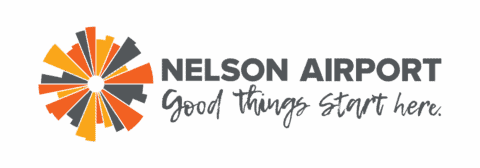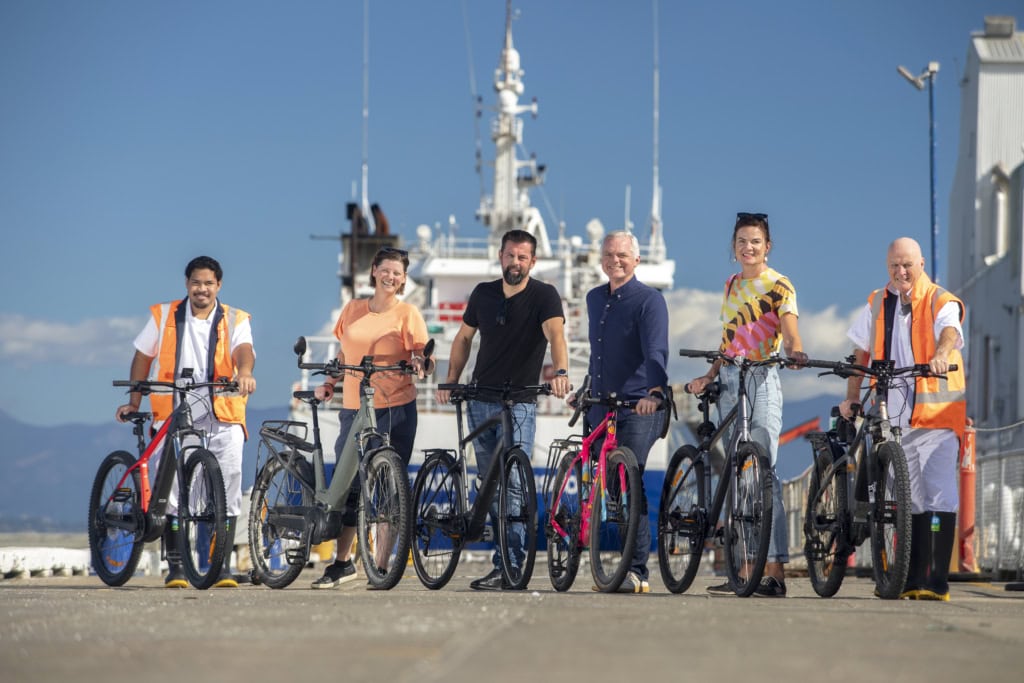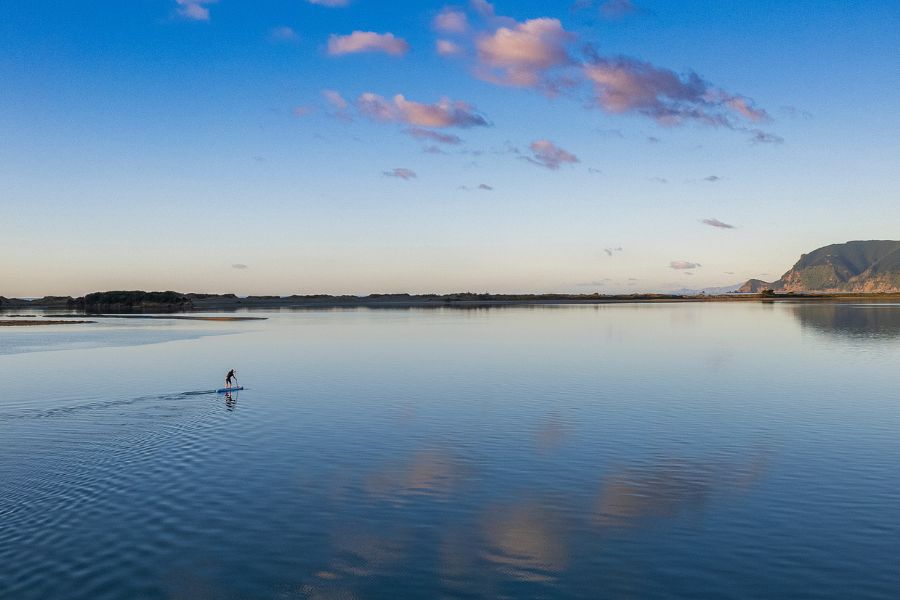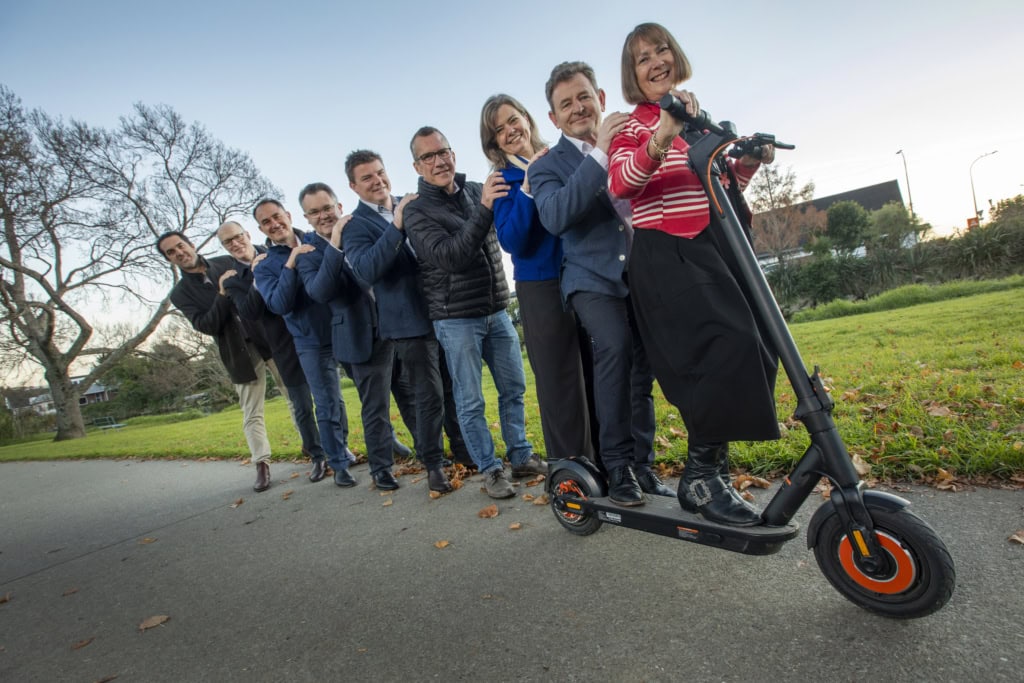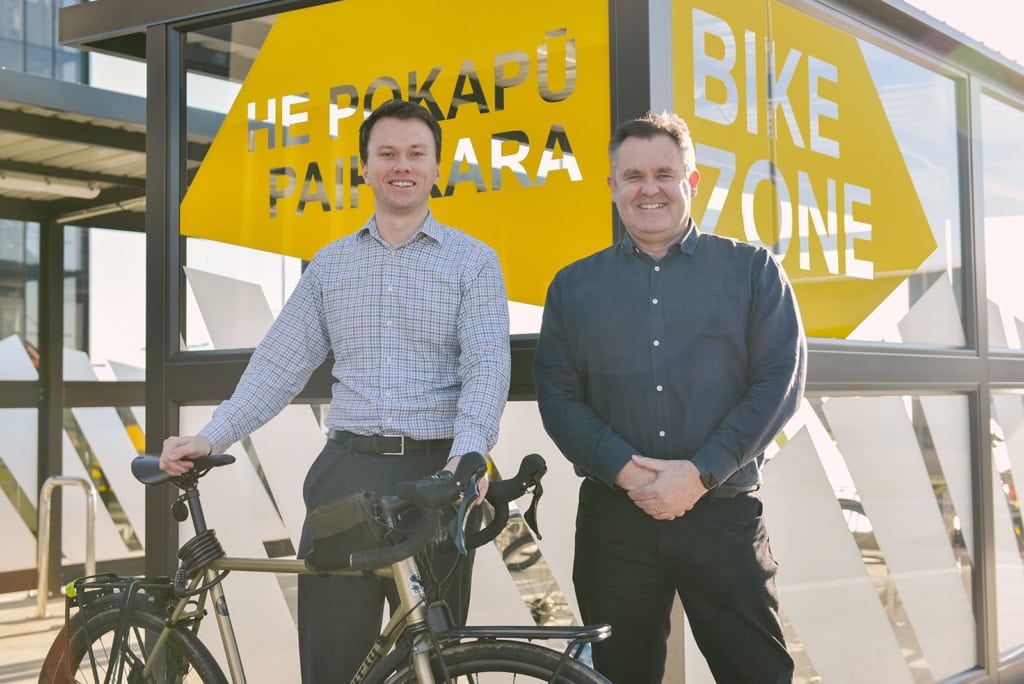
Nelson Airport’s vision – to become a world-class airport that supports zero-emissions aircraft operations – doesn’t stop with its service. Their team have been working with Mission Zero to find ways to help their employees get to and from work using low-carbon forms of transportation.
That means supporting biking, walking, bussing, car-pooling and the use of electric vehicles through both infrastructural and cultural change.
We spoke to Nelson Airport’s CFO Adrian Ferris (left) and Management Accountant Kurt Clayworth (right), to find out more about how they have tackled this mahi.


Why did you want to encourage your employees to commute differently?
“This work immediately aligns with our purpose and long-term goals. As an organisation, we’re committed to contributing to a sustainable, prosperous Nelson Tasman, and our mission is to provide airport infrastructure that connects our region to the world. We want to strengthen that commitment by encouraging staff to walk the talk with us.”
What were you already doing?
“In addition to the Aotearoa Bike Challenge staff have access to convenient EV charging and undercover bike parking close to the office. We support flexible working from home where possible, although many of our roles are operational and onsite. We rolled out the Workride programme just before Christmas, which is helping staff access bikes for their daily travel.
“We were already tracking staff commuting as part of our broader climate reporting, but working with Mission Zero – who introduced us to other organisations in the region also looking into this area – gave us a chance to understand how we compare and go beyond the data to explore ways to inspire behaviour change and reduce emissions more meaningfully. This has really helped us to turn reporting into action.”
What are some of the positive outcomes you’ve seen from taking action on employee commuting?
“One of the most valuable aspects of accelerating this work has been the increased internal engagement it has sparked. The tools and ideas shared across other organisations, along with the support of Mission Zero, have allowed us to approach low-carbon commuting from a new perspective. We’ve seen staff become more involved in the concept through tangible activities like the Aotearoa Bike Challenge, which saw people commuting by bike, scooter, and even roller skates.”
What are you looking at next?
“We’re now looking at ways to support carpooling in a more formal way.
“There’s already some informal ride-sharing happening among staff, and we’re exploring whether a coordinated system – perhaps through internal comms or an app – could help scale this. We’re aiming to normalise sustainable travel as a collective effort.
“We also see potential in further collaboration with other organisations thinking about employee commuting – whether that’s through shared events, regional carpooling networks, or communication tools that help people across businesses connect and plan low-carbon travel together. There’s a lot to gain from making these choices easier and more supported.
“For us, supporting low-carbon employee commuting has given us a framework to build on and a network to grow with. We’re excited to see this work develop as we continue to engage with Mission Zero and other businesses in the region.”
Image: All CopyRights Reserved by Yuncong M.
